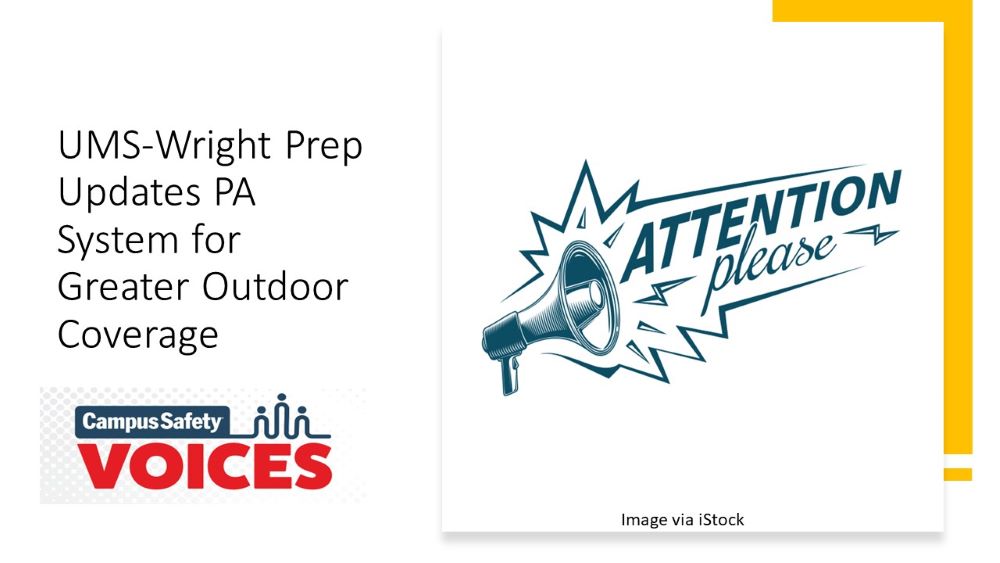Outdoor public address systems are critical components of any school’s emergency notification system. Emergency messages must reach everyone on campus, including those students, faculty, and staff members who are outside on the football field, baseball diamond, picnic areas, playgrounds, and other outdoor areas.

Campus Safety Voices, available on Spotify and Apple streaming platforms, features timely conversations on a wide range of topics affecting K-12 schools, institutions of higher education, and healthcare facilities.
But how can K-12 campus officials ensure that this actually happens? Many times, PA system speakers aren’t installed in remote outdoor locations on campus. If they are installed, the announcements might not be loud enough or intelligible. The same issues often happen indoors.
Such was the challenge at the UMS-Wright Preparatory School located in Mobile, Alabama. UMS-Wright Director of Campus Safety Garrett Humphrey and his team recently held an unannounced lockdown drill, only to discover that the school’s emergency notifications weren’t reaching everyone on campus: specifically the students, teachers, and other employees who were outdoors on the sporting fields and playgrounds. Humphrey understood this was a significant issue.
“We have two lower school playgrounds, so you have multiple teachers there caring for kids as young as three years old,” he said.
Humphrey chose to update the PA system to not only address UMS-Wright’s old system’s coverage issues but to also make the school’s teachers less reliant on their cell phones to receive emergency notifications.
“If I’m dealing with an athletic coach that has junior and senior high kids, they might be able to receive that [mobile phone] push notification, but if I’m dealing with a teacher who is responsible for three-year-olds and she’s got 13 of them, it’s possible she’ll be distracted and not receive that push notification,” he told me.
[promo_content slug=”2023-doy-winner-announced-at-csc”]
Humphrey and his team went through a lengthy and thorough process to upgrade UMS-Wright’s PA system, including conducting an inventory and testing what they already had, determining the exact areas that had coverage problems. In some cases, the speakers had been unplugged because those locations were receiving too-many non-emergency messages. UMS-Wright’s old PA system didn’t allow administrators to differentiate general announcements from emergency announcements, or to send certain notifications to select individuals or groups.
The new digital system that was installed provides much better coverage of the campus and allows for the differentiation of messages and sounds so that everyone can now identify what is a routine administrative message versus an emergency message. Additionally, emergency announcements are preceded by a different sound that makes it obvious that everyone must pay attention to the notification. Administrators also now have the option to make announcements to specific groups rather than only having the option to broadcast all types of messages to everyone.
All this and much more was done to upgrade UMS-Wright’s PA system in a smart, cost-effective way. This is just one of the reasons why Humphrey was named as a finalist in this year’s Campus Safety Director of the Year awards program.
Here are the timestamps of what was specifically covered in the interview:
- The specific challenges UMS-Wright experienced with its PA system: 2:20
- How Humphrey addressed this issue; what was installed; how he determined what was needed; and the overall process: 5:32
- How the solution that was chosen achieved cost savings: 9:05
- Humphrey’s advice to other school safety and security professionals about public address systems and notifying students, faculty, and staff who are outdoors during an emergency: 11:25
- What Humphrey would do differently if he had to do it all over again: 13:58
Watch the full interview here or listen on the go on Apple or Spotify.









